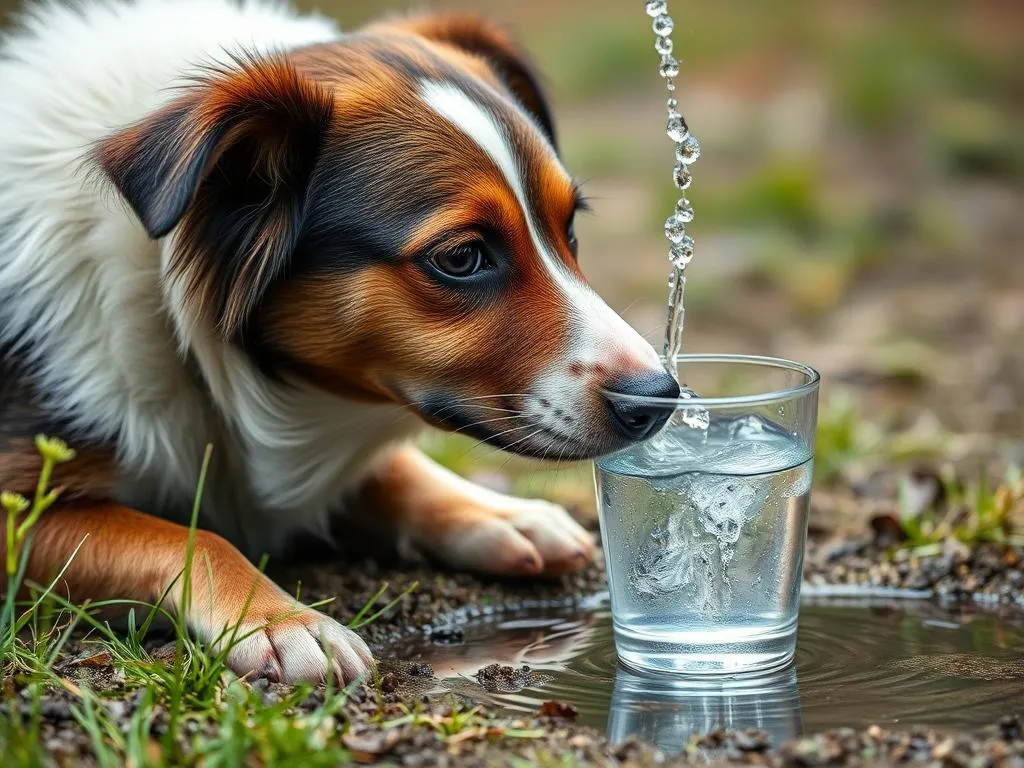
Introduction
Hydration is vital for the well-being of your furry friend. Water plays a crucial role in a dog’s health, supporting digestion, regulating body temperature, and facilitating chemical reactions necessary for energy production. How to get a dog to drink more water is a common concern among dog owners, especially when it comes to ensuring their pets remain adequately hydrated.
Recognizing the signs of dehydration in dogs, such as dry gums, lethargy, or loss of skin elasticity, is crucial. Unfortunately, many dogs do not drink enough water, leading to potential health issues. This article aims to provide effective strategies to encourage water intake in your canine companions.
Understanding Canine Hydration Needs
Daily Water Requirements
A dog’s daily water needs can vary significantly based on several factors, including size, age, and activity level. Generally, dogs need about one ounce of water per pound of body weight each day. For example, a 20-pound dog should consume approximately 20 ounces of water daily. However, puppies, nursing dogs, and highly active dogs may require more.
- Size: Larger dogs tend to need more water than smaller breeds.
- Age: Puppies and senior dogs often have different hydration needs. Puppies typically need more water, while older dogs may drink less.
- Activity Level: More active dogs, particularly those who exercise frequently or play outdoors, will need additional hydration to compensate for water lost through sweat and panting.
Effects of Dehydration
Dehydration can have serious consequences for dogs. Symptoms include:
- Dry mouth and gums
- Excessive panting
- Lethargy or weakness
- Sunken eyes
- Decreased skin elasticity (the skin does not spring back quickly when pulled)
If left unaddressed, dehydration can lead to severe health risks, including kidney failure, urinary tract infections, and even death in extreme cases. Therefore, ensuring your dog stays hydrated is essential for their overall health.
Reasons Why Dogs May Not Drink Enough Water
Environmental Factors
Environmental conditions can significantly influence a dog’s water intake.
- Temperature and Humidity: Hot and humid weather can make dogs more thirsty, while colder weather may reduce their desire to drink. It’s essential to monitor their water intake during extreme temperatures.
- Access to Fresh Water: Dogs need access to clean, fresh water at all times. If their water bowl is dirty or empty, they are less likely to drink.
Behavioral Factors
Sometimes, a dog’s behavior can hinder their water intake.
- Fear or Aversion to Water Bowls: Some dogs may have developed a negative association with their water bowl, possibly due to a past experience. This aversion can lead them to avoid drinking altogether.
- Preference for Certain Types of Containers: Dogs can be picky about their water bowls. Some prefer stainless steel over plastic, while others may like a deeper bowl. Experimenting with different types may yield better results.
Health-Related Issues
Various health conditions can impact a dog’s thirst.
- Underlying Medical Conditions: Conditions such as diabetes, kidney disease, or infections can affect a dog’s desire to drink. If you notice a sudden change in your dog’s drinking habits, consult your veterinarian.
- Medications: Certain medications can cause increased thirst or dehydration. If your dog is on medication, discuss potential side effects with your vet.
Strategies to Encourage Water Intake
Optimizing Water Availability
Making water easily accessible can significantly increase your dog’s water intake.
- Choosing the Right Type of Water Bowl: Experiment with different materials and styles. Some dogs may prefer elevated bowls, while others might like a bowl with a wider base.
- Keeping Water Fresh and Clean: Change the water daily and clean the bowl regularly to encourage your dog to drink more. Stale or dirty water can deter them from drinking.
Enhancing Water Appeal
Making water more appealing can entice your dog to drink.
- Adding Flavor to Water: Adding low-sodium broth or flavored water enhancers can make drinking more enjoyable. Ensure any added flavors are safe for dogs.
- Using Ice Cubes or Frozen Treats: Some dogs love chewing on ice cubes or frozen treats made from broth or blended fruits. This not only helps with hydration but adds a fun element to drinking.
Increasing Water Intake Through Food
Food can also play a role in your dog’s hydration.
- Incorporating Wet Food into the Diet: Canned dog food typically contains a higher moisture content than dry kibble. Mixing wet and dry food can increase overall water consumption.
- Adding Water to Dry Kibble: Pouring a little water over dry kibble can soften it and make it more palatable, encouraging your dog to consume more fluids.
Interactive and Engaging Methods
Engaging your dog in fun activities can promote hydration.
- Using Water Fountains for Dogs: Many dogs are attracted to running water. Dog water fountains can encourage them to drink more by providing a continuous flow of fresh water.
- Playful Activities that Involve Water: Taking your dog to a dog park with water features, or even a kiddie pool at home, can make drinking more enjoyable and fun.
Monitoring Your Dog’s Hydration
Understanding Urine Color and Frequency
Monitoring your dog’s urine can provide valuable insights into their hydration status.
- How to Evaluate Hydration Status Through Urine: A well-hydrated dog typically has light yellow urine. Dark yellow or amber urine may indicate dehydration.
- Normal vs. Concerning Changes in Urination: Pay attention to changes in frequency and amount of urination. If your dog is urinating less frequently or showing signs of discomfort while urinating, consult your veterinarian.
Regular Vet Check-Ups
Routine check-ups play a crucial role in maintaining your dog’s health.
- Importance of Routine Health Checks for Hydration Monitoring: Regular vet visits can help catch any underlying health issues that may affect hydration.
- Discussing Hydration Concerns with Your Veterinarian: If you have concerns about your dog’s water intake or hydration status, don’t hesitate to bring it up with your vet. They can provide tailored advice and solutions.
When to Seek Professional Help
Recognizing Severe Dehydration
Identifying critical symptoms of severe dehydration is essential.
- Identifying Critical Symptoms That Require Immediate Attention: Signs such as excessive lethargy, dry mouth, rapid heart rate, or sunken eyes indicate severe dehydration. If your dog exhibits these symptoms, seek veterinary care immediately.
- Steps to Take in Case of Severe Dehydration: If you suspect severe dehydration, try to get your dog to drink small amounts of water. If they refuse or show worsening symptoms, take them to the vet as soon as possible.
Veterinary Solutions
In some cases, veterinary intervention may be necessary.
- Possible Treatments and Interventions for Hydration Issues: Depending on the severity of dehydration, your vet may recommend intravenous fluids, subcutaneous fluids, or other treatments to restore hydration levels.
- Importance of Following Vet Recommendations: Always adhere to your veterinarian’s advice regarding hydration and any underlying health issues affecting your dog.
Conclusion
Keeping your dog hydrated is essential for their overall health and well-being. Understanding their hydration needs and recognizing the signs of dehydration can help you ensure your furry friend remains happy and healthy. Implementing the strategies discussed, such as optimizing water availability, enhancing water appeal, and monitoring hydration levels, can make a significant difference in your dog’s water intake.
By fostering a positive relationship with water, you can help your dog thrive and enjoy a long, healthy life. Remember, hydration is key to your dog’s vitality!









